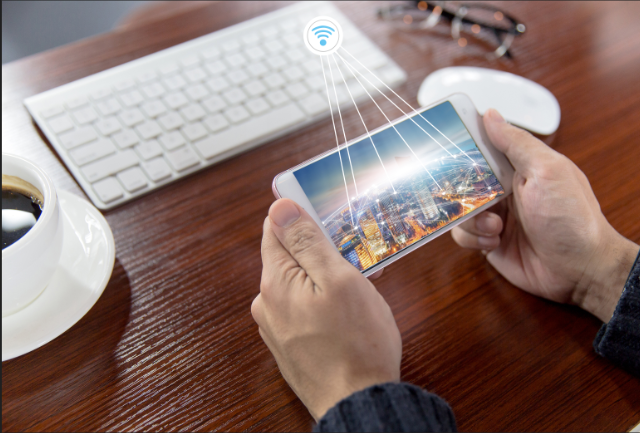Why bridging 5G and Wi-Fi is the key to a connected future

Why bridging 5G and Wi-Fi is the key to a connected future

As 5G and Wi-Fi 6 continue to roll out at a similar pace, the next generation of connectivity is finally starting to emerge. The promise of higher throughput, better connection density, wider coverage and easier access is convergence, but is convergence the key to deliver on this promise? Wireless Broadband Alliance CEO Tiago Rodrigues explains why 5G and W-iFi bridging is critical to our connected future.
When we think about the future of connectivity, and what a truly connected digital landscape might look like, 5G comes to mind almost immediately. It's natural to assume that, with the successful rollout of IoT devices and our growing reliance on the cloud, cellular techno will hold everything together. However, the truth is much more nuanced. True interoperability between Wi-Fi 6 and 5G will be decades to come if we take advantage of edge computing, enhanced throughput, higher connection density, wider coverage, and wider accessibility. The necessary basis for the year.
Instead of going head-to-head with Wi-Fi and trying to replace it, vendors and cellular operators should perhaps turn their attention to the mutual long-term benefits of convergence. Suppose the border between cellular and Wi-Fi technologies becomes less impenetrable .In this case, both parties will benefit from a wealth of new use cases and business opportunities, paving the way for OpenRoaming™ and a more seamlessly connected consumer environment.
Why should operators consider convergence?
Mobile network operators (MNOs) stand to benefit greatly from the interoperability that convergence provides. One, they will increase the visibility of Wi-Fi networks, enabling them to more effectively market their services and improve the quality of experience (QoE) they provide to users. Don't forget, given their track record in handling subscribers and data, MNOs are well-suited to provide Wi-Fi network management solutions to large enterprise customers, which could open up entirely new revenue streams for the industry.
Wi-Fi operators will also be able to offload user traffic to cellular networks with less friction and more context, enabling MNOs to further customize their services and improve the overall customer experience.
Crucially, convergence will allow Wi-Fi operators to use 5G cellular service to fill any connectivity gaps that exist between their fixed network networks. For this to happen, however, authentication and secure, automated onboarding need to be established between the two technologies. Far from being a negative, this interdependence could create numerous opportunities for both cellular and fixed network architectures as we move towards a more connected world.
For example, if mobile operators want 5G to deliver on its century promise of accessibility and coverage, they will need to converge with Wi-Fi technology. At current rates, 5G will account for only about 34 percent of total mobile connections by 2025, according to Statista. Globally, 5G penetration is only expected to reach around 20 percent and remain there until 2030. Therefore, it is clear that Wi-Fi fixed networks are critical to the long-term sustainability of 5G.
What can we expect from fusion?
We've made the case for MNO and Wi-Fi network convergence regarding the potential for hassle-free connectivity. But how will this potential be filled? What incentives are there, and what currently impossible business use cases will emerge at the network and RAN layers?
The potential use cases are too numerous to list in any single article, but let's take the opportunity for enterprise Wi-Fi and MNOs to provide customers with more seamless access. Traditionally, enterprise Wi-Fi deployments have been used to provide Internet access to employees and field personnel, but with certain limitations.
These access points often serve vast areas and hundreds of devices, so policy controls, terms of service, and of course compliance around data sharing must be considered. This can create some unnecessary friction in the onboarding process, forcing users to sign or click on a service agreement before being allowed to connect. On the other hand, most network operators will only go through this process once when their subscribers join the network for a long time, so this compliance can be "blended in" and ready to move from fixed network to fixed network.
This means it may be more beneficial for businesses to have mobile service providers manage these aspects, which can also fill in any gaps in the coverage of large workplaces. This is just one of many examples of how Wi-Fi and 5G technologies overlap and benefit from each other rather than compete, ultimately providing users with better service and less friction.
Another example of mobile convergence might be "smart cities". Instead of users having to constantly reconnect and enter their personal details, re-accept terms and conditions and go through the login process while roaming from one hotspot to another, Passpoint-enabled technologies like OpenRoaming can ensure people are more mobile as they move around town or city. Seamless and frictionless transitions. The Telecom Infrastructure Project (TIP) and its OpenWiFi initiative take this idea a step further, disaggregating Wi-Fi and eliminating vendor lock-in, giving businesses more control over how Wi-Fi is delivered and how it is monetized. Control and opportunity.
The integration of Wi-Fi and 5G technologies will undoubtedly present its fair share of challenges, but the potential benefits of convergence outweight any short-term difficulties. Not to mention, many of the barriers to progress have been addressed as businesses on both sides begin To realize that convergence is an important stepping stone to progress towards truly global connectivity and mobility.